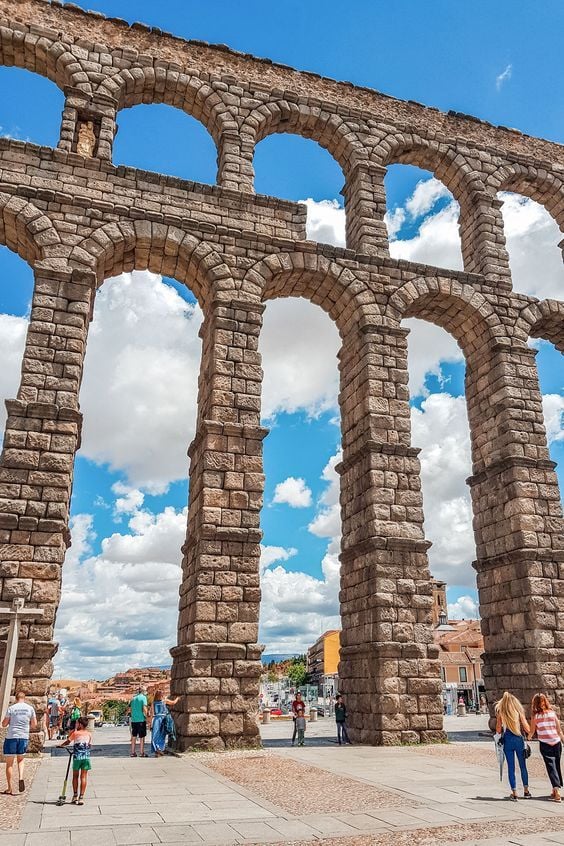The Romans built some of the world's greatest wonders.
Like the Pantheon, Appian Way and Colosseum.
But there was one Roman wonder in particular that came head and shoulders above the rest... 🧵
Like the Pantheon, Appian Way and Colosseum.
But there was one Roman wonder in particular that came head and shoulders above the rest... 🧵

The Segovia Aqueduct is the arguably the greatest example of Roman engineering outside of Italy.
It was built almost 2,000 years ago and stretched for 17 kilometers (11 miles) to the very heart of Segovia.
It was built almost 2,000 years ago and stretched for 17 kilometers (11 miles) to the very heart of Segovia.
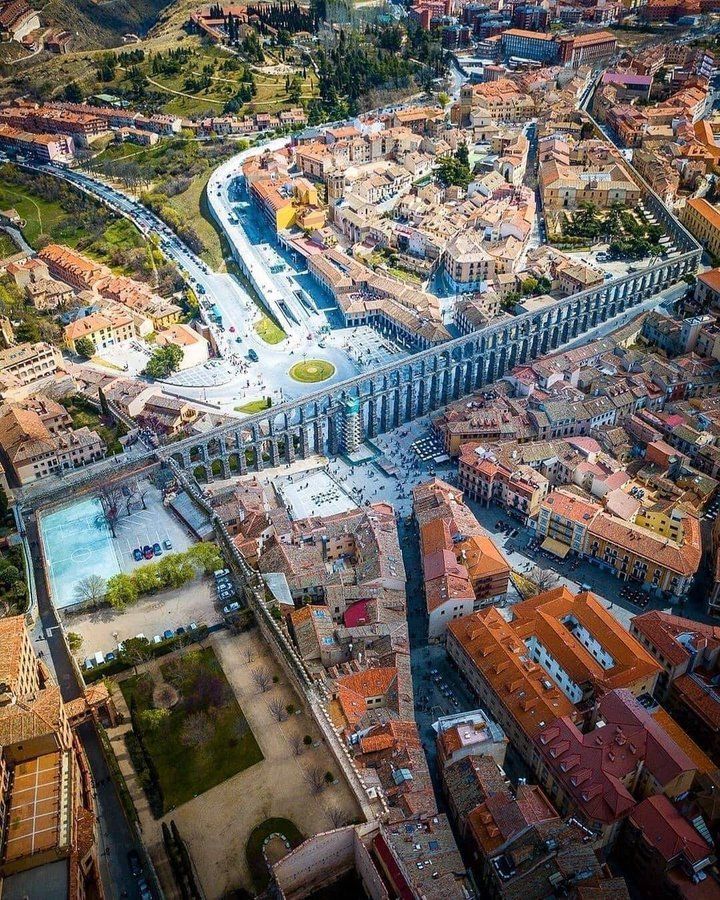
The most iconic segment, which dominates the Plaza of Segovia was probably the most impressive of the aqueduct.
This section alone contained 128 arches arranged in two separate levels.
But how was all of this (and more) actually built?
This section alone contained 128 arches arranged in two separate levels.
But how was all of this (and more) actually built?

The granite blocks were quarried locally and then transported for construction using pulleys and winches.
Even wooden scaffolding was erected to support the arches, allowing for precise placement of blocks.
Even wooden scaffolding was erected to support the arches, allowing for precise placement of blocks.
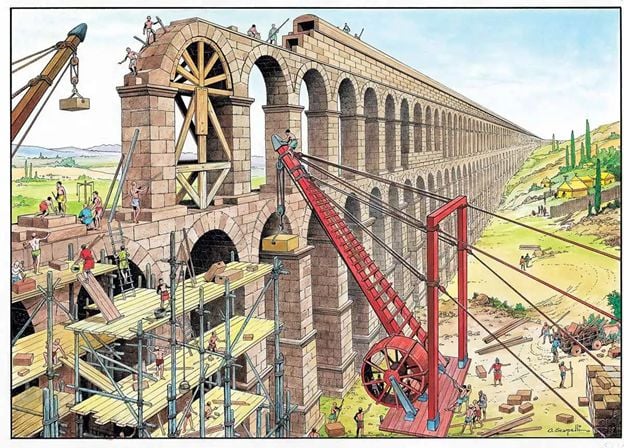
But most impressive above all, is the fact that there is no kind of cement or mortar holding it all together.
The stones are all held in a perfect balance of forces only by gravity.
The stones are all held in a perfect balance of forces only by gravity.

The aqueduct was to provide a continuous flow of fresh water to the city's inhabitants.
To do this, the gradient had to be meticulously constructed at 1% over its entire length, ensuring a steady flow from the Frío River.
To do this, the gradient had to be meticulously constructed at 1% over its entire length, ensuring a steady flow from the Frío River.

The structure stands at an impressive 28.5 meters tall at its highest point.
This is in the Plaza del Azoguejo.
This is in the Plaza del Azoguejo.
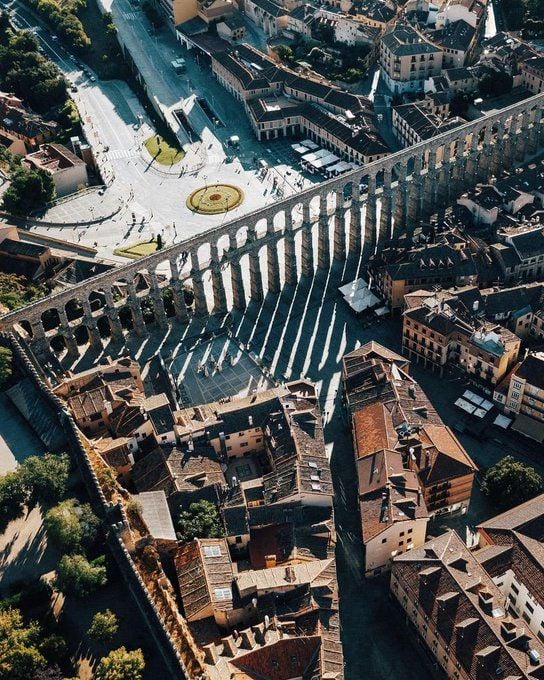
To give you a real sense of scale of these aqueducts, take a glance at the Pont du Gard in France.
If you look closer, you notice the people walking the middle arch.
If you look closer, you notice the people walking the middle arch.

Much of the aqueduct's route involved channels carved through mountains.
The Romans built gigantic underground reservoirs, by cutting into the rock and partially by using bricks.
This is an example of cistern under modern-day Istnabul.
The Romans built gigantic underground reservoirs, by cutting into the rock and partially by using bricks.
This is an example of cistern under modern-day Istnabul.
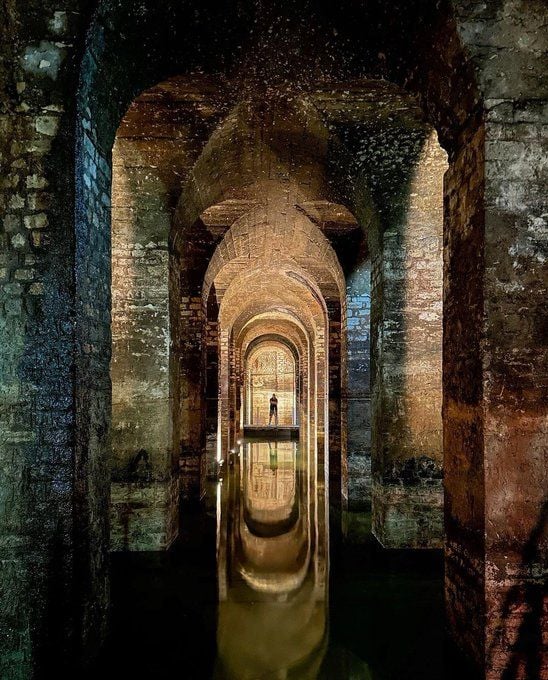
Aqueducts would involve a network of pipes, bridges and tunnels.
Over 200 were built across the Roman Empire, just like this one from Turkey.
Over 200 were built across the Roman Empire, just like this one from Turkey.
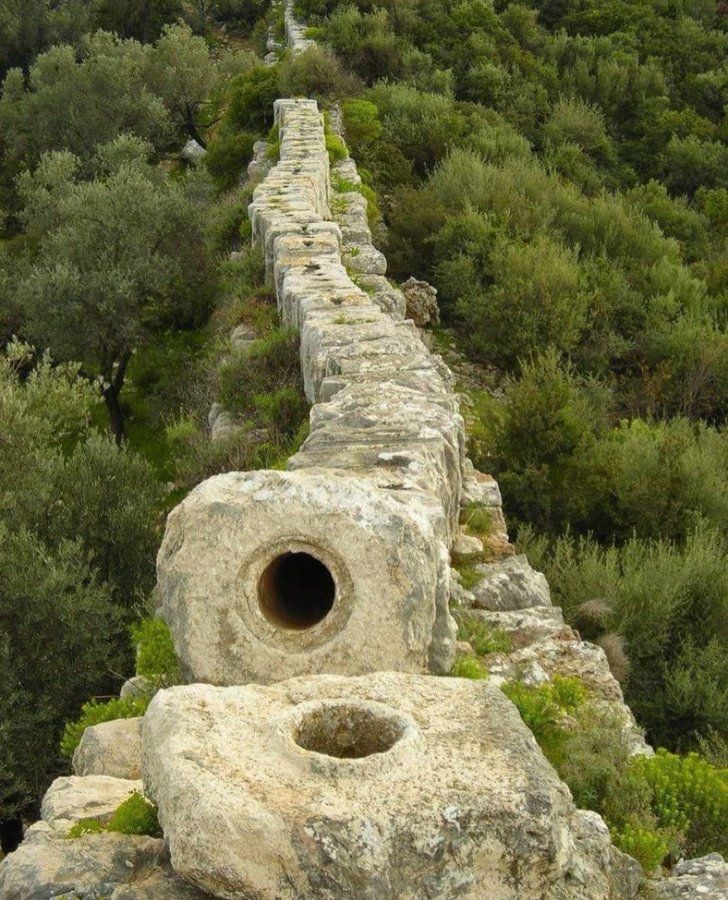
Unfortunately, many parts were destroyed by the Moorish invasion in 1072.
Then, it was rebuilt 400 years later, with great care taken not to change any of the original design.
Then, it was rebuilt 400 years later, with great care taken not to change any of the original design.

Roman architecture was built to last.
In fact, Segovia aqueduct was used for centuries after the Romans had gone.
From the Visigothic Kingdom and Umayyads to the Kingdoms during the Reconquista.
In fact, Segovia aqueduct was used for centuries after the Romans had gone.
From the Visigothic Kingdom and Umayyads to the Kingdoms during the Reconquista.
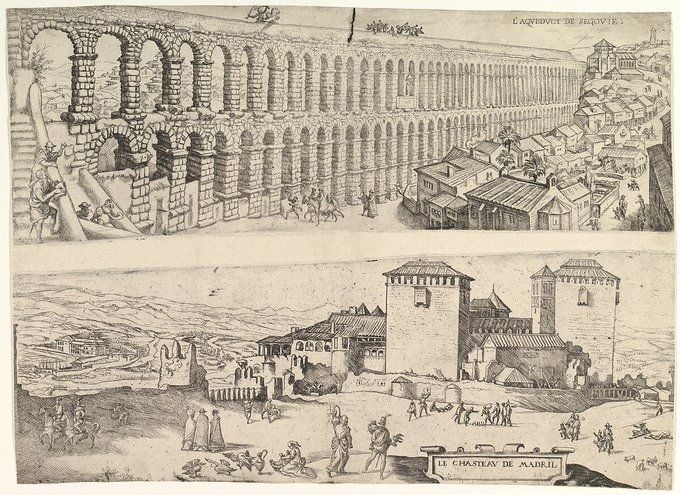
Aqueducts were vital parts of Roman society: they were lifelines for the rapidly growing cities of the empire.
As Dionysius put it:
"The extraordinary greatness of the Roman Empire manifests itself above all in three things: the aqueducts, the paved roads and ... drains."
As Dionysius put it:
"The extraordinary greatness of the Roman Empire manifests itself above all in three things: the aqueducts, the paved roads and ... drains."
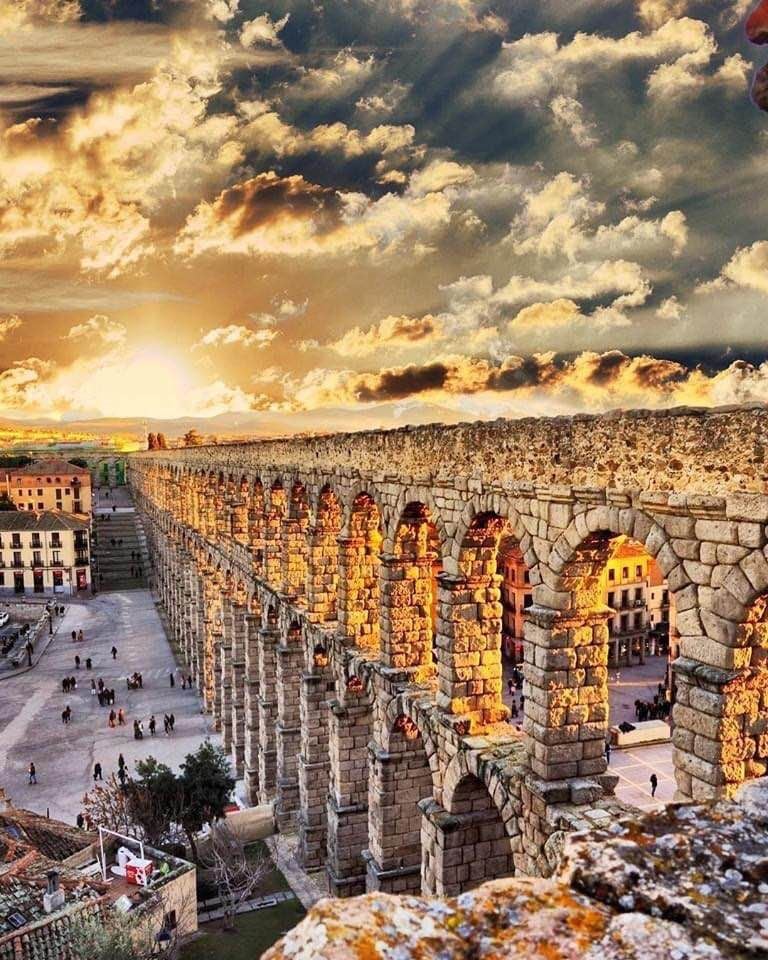
This is what allowed Roman civilization to advance so quickly, alongside its culture.
Those who had access to clean water, would have a leverage in social power, giving them the upper hand on the battlefield.
But the aqueduct in Segovia wasn't the only major one...
Those who had access to clean water, would have a leverage in social power, giving them the upper hand on the battlefield.
But the aqueduct in Segovia wasn't the only major one...
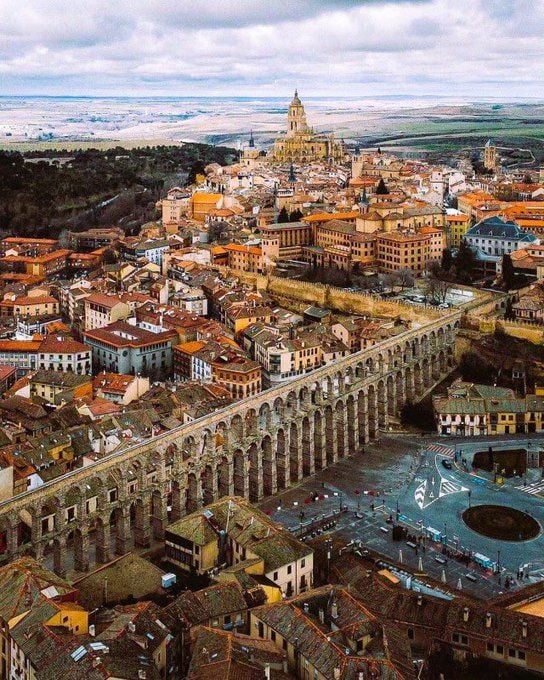
There is the Pont du Gard in France, built almost 2,000 years ago.
Its impressive three-tiered structure was built to carry water from the Gardon River to modern-day Nimes.
And yes this one was also built without cement...
Its impressive three-tiered structure was built to carry water from the Gardon River to modern-day Nimes.
And yes this one was also built without cement...

In Rome stood the Aqua Claudia, one of the eight important aqueducts in the city.
Built in the 1st century, it stretched for over 68km and supplied Rome's plethora of public fountains and baths.
Today, a football field lies in the shadows of its glory.
Built in the 1st century, it stretched for over 68km and supplied Rome's plethora of public fountains and baths.
Today, a football field lies in the shadows of its glory.
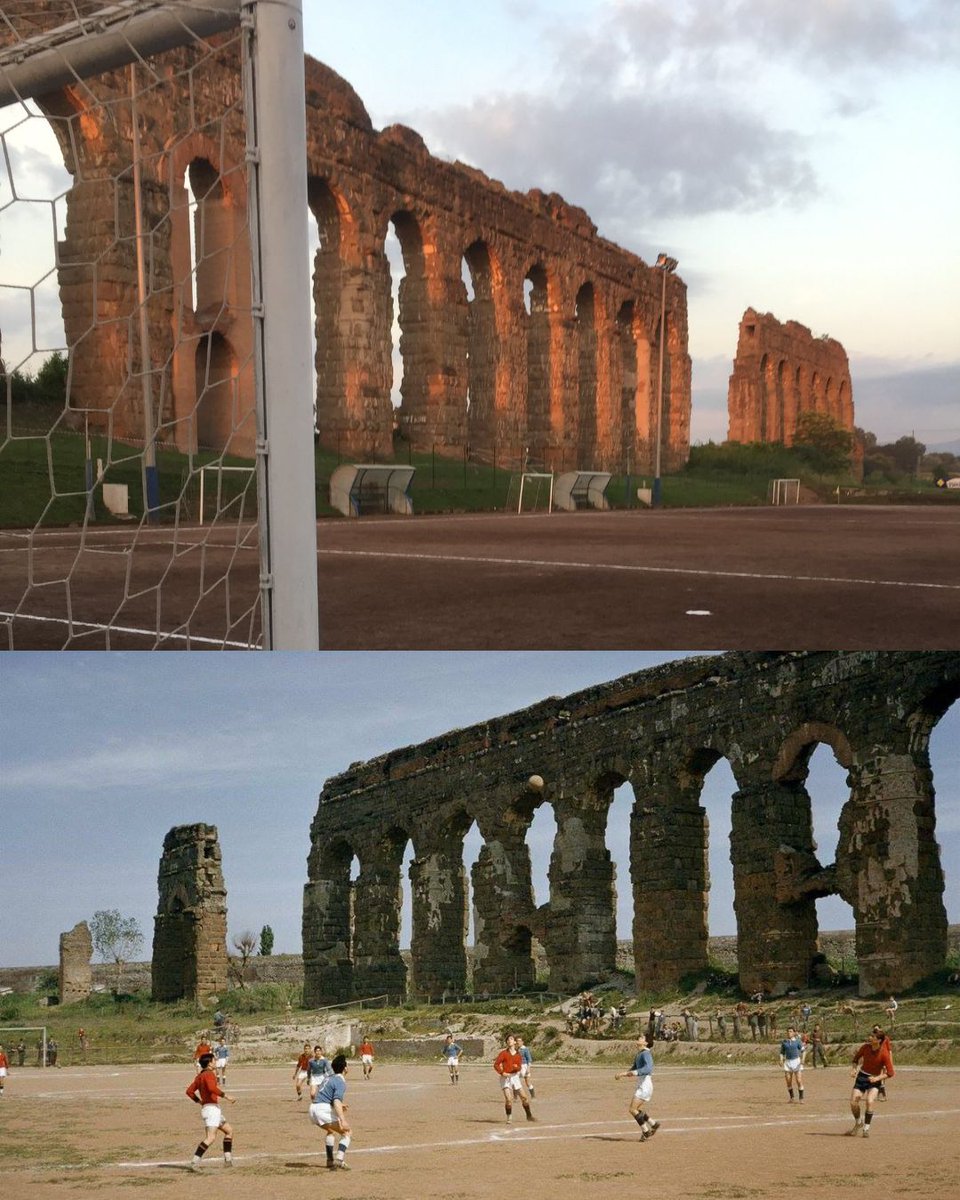
There were many wonders of the Roman Age.
But the Segovia Aqueduct may just be one of the world's most impressive ancient marvels of engineering.
What do you think?
But the Segovia Aqueduct may just be one of the world's most impressive ancient marvels of engineering.
What do you think?
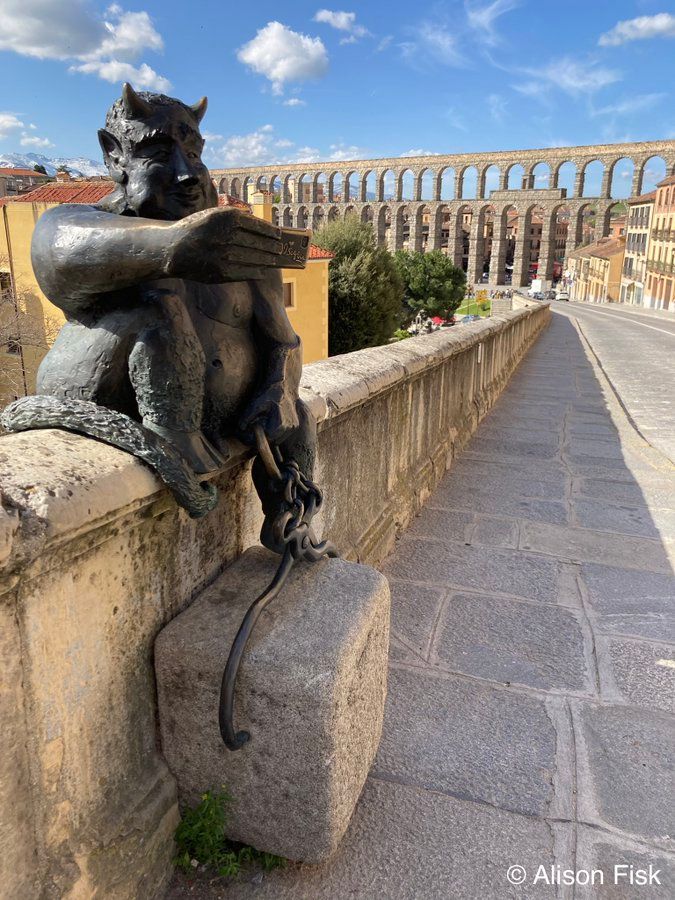
If you enjoyed reading this thread, kindly consider:
1. Following @WorldScholar_
2. Reposting this thread
3. Subscribing to our newsletter for more interesting content like this:
worldscholar.substack.com
x.com/WorldScholar_/…
1. Following @WorldScholar_
2. Reposting this thread
3. Subscribing to our newsletter for more interesting content like this:
worldscholar.substack.com
x.com/WorldScholar_/…
• • •
Missing some Tweet in this thread? You can try to
force a refresh

